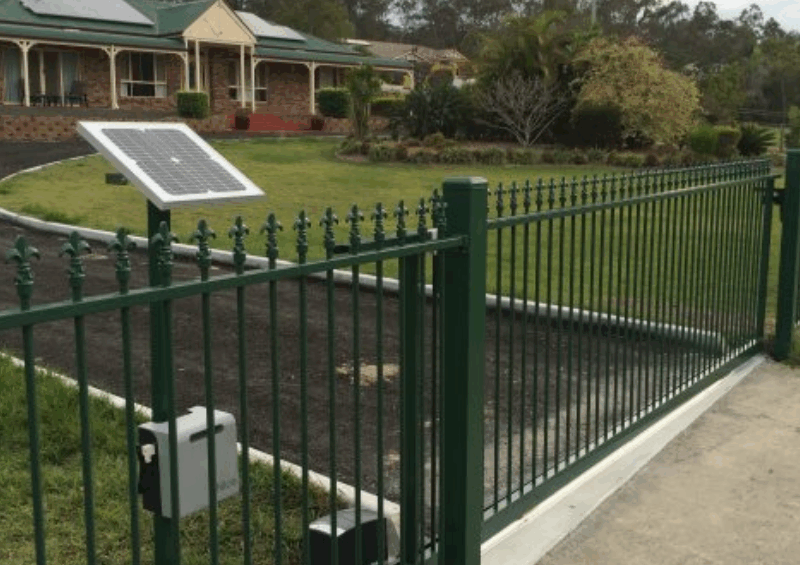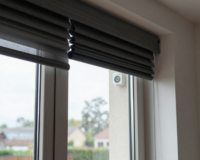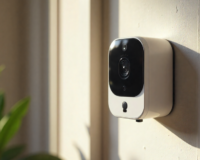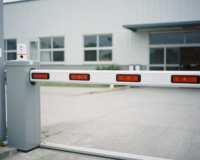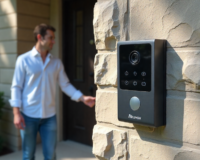As homeowners become more environmentally conscious, the demand for solar-powered home automation continues to grow. Among the most practical and eco-friendly innovations today is solar sliding gate automation — a technology that uses renewable solar energy to power your property’s security gate. This not only eliminates the need for grid electricity but also offers energy independence, reduced operating costs, and sustainable functionality. Solar-powered sliding gate motors are ideal for homes located in remote areas, eco-conscious neighborhoods, or properties where trenching electrical cables would be expensive or disruptive.
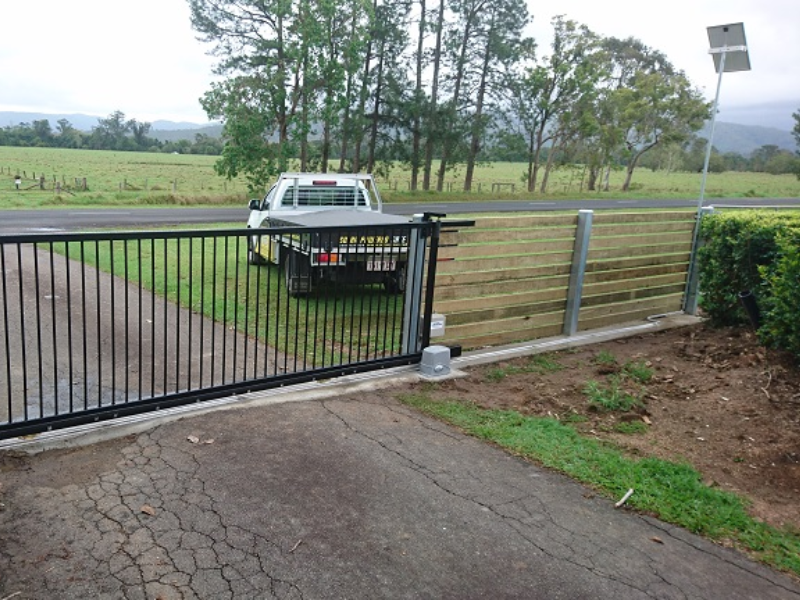
Why Choose Solar Sliding Gate Automation?
The main appeal of solar sliding gate automation lies in its perfect blend of convenience, sustainability, and cost efficiency. In today’s world, where both security and environmental responsibility matter more than ever, these systems provide an innovative way to achieve both. By using the sun’s free and renewable energy, solar-powered gate motors eliminate the reliance on grid electricity, reducing not just energy bills but also your carbon footprint.
With solar sliding gate automation, every time your gate opens or closes, it draws power directly from stored solar energy, collected by panels installed on or near the gate. This independence from the electrical grid means your gate will continue to function even during power outages, storms, or load-shedding events — ensuring your property remains safe and accessible at all times. This feature alone makes solar gate systems an ideal choice for Australian homeowners who value reliability and resilience.
For homes located in rural or remote areas, solar-powered gate systems offer even greater benefits. Traditional electric gate installations often require extensive trenching, cabling, and electrical connections — which can be expensive, time-consuming, and disruptive to landscaping. In contrast, solar gate automation operates completely off-grid, powered by solar panels and batteries, eliminating the need for mains power connections. This not only lowers installation costs but also simplifies setup and maintenance.
Beyond cost savings and practicality, solar gate automation aligns seamlessly with modern sustainable living. As Australia moves toward cleaner energy solutions, integrating solar technology into your home’s infrastructure represents a proactive commitment to environmental stewardship. You’re not just automating your gate — you’re contributing to a greener, more energy-efficient home ecosystem.
Moreover, many systems, like those offered by DigitalHomeSystems, can integrate with smart home platforms, allowing users to control and monitor their gates remotely. Imagine being able to open your gate for a visitor using your smartphone, even when you’re not home — all powered by renewable solar energy.
Ultimately, choosing solar sliding gate automation means investing in a technology that delivers long-term savings, enhanced security, and sustainable living. It’s a forward-thinking solution that embodies both modern convenience and environmental responsibility — making it a smart choice for homeowners looking to future-proof their property while supporting a cleaner planet.
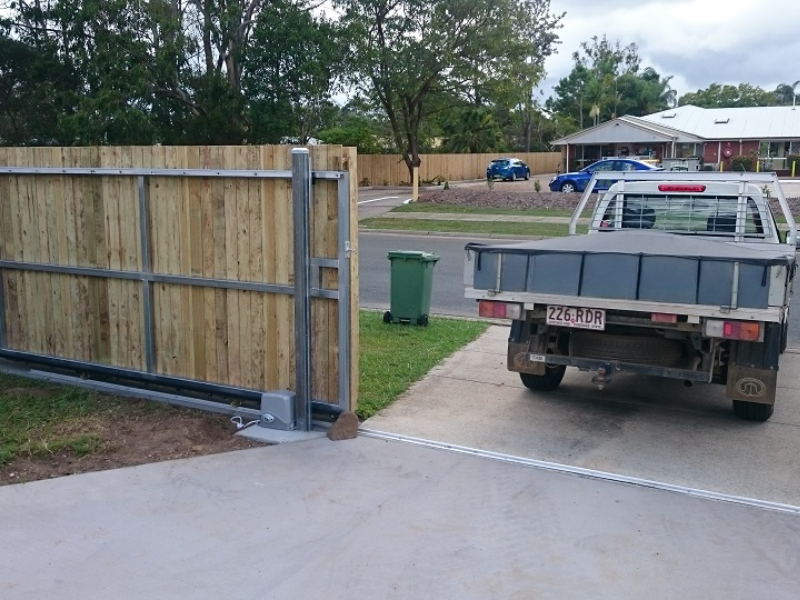
How Solar Sliding Gate Motors Work
At their core, solar sliding gate motors are simple yet highly efficient systems. The main components include solar panels, a charge controller, a battery, and a gate motor. The solar panels capture sunlight and convert it into direct current (DC) electricity. This electricity passes through the charge controller, which regulates voltage to prevent overcharging or deep discharging of the battery. The stored energy in the battery then powers the motor and control circuitry, enabling the gate to open and close automatically using remotes, keypads, or smartphone apps.
During cloudy weather or nighttime, the battery provides backup energy to keep the gate operational. Some systems also feature hybrid designs that allow switching to mains electricity if solar energy is insufficient. This combination of renewable power and reliable backup ensures your gate functions seamlessly under all conditions.
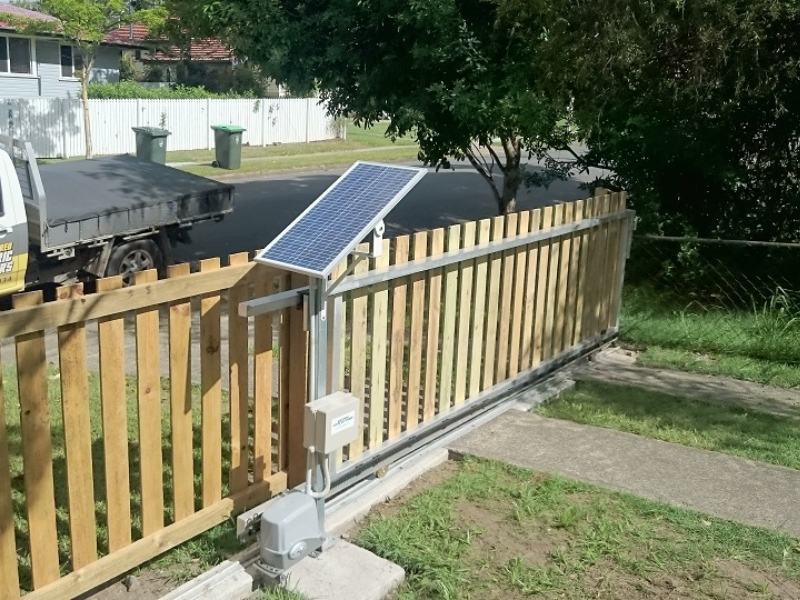
Who Benefits Most from Solar Sliding Gates?
Solar sliding gate automation suits a wide range of homeowners, but it’s especially beneficial for those in rural or semi-rural areas where power lines are distant or unreliable. Homes located off-grid or in regions with frequent blackouts can maintain consistent operation thanks to the battery storage component. Environmentally conscious homeowners also favor solar gates as a way to reduce energy consumption and carbon emissions.
Additionally, properties undergoing renovation often find solar gate motors advantageous. Instead of tearing up landscaping, driveways, or pathways to lay new electrical cables, installers can simply mount a solar panel in a sunny location nearby. This makes solar-powered systems both practical and cost-efficient for retrofitting older properties with modern automation.
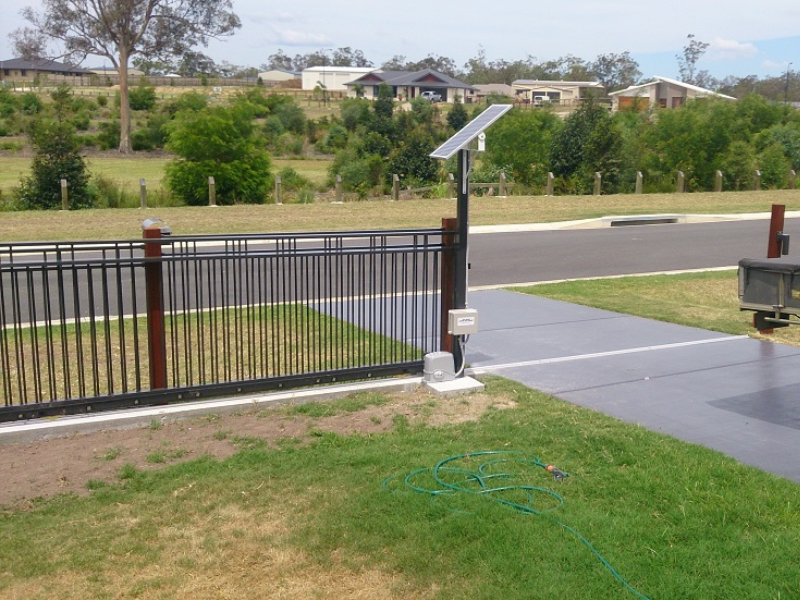
Key Specifications to Consider When Buying A Solar Sliding Gate
When selecting a solar sliding gate automation system, there are several technical aspects to compare before purchasing. The most important factor is gate weight and length rating. Every motor has a maximum capacity, and exceeding it can cause strain or failure. Always choose a motor with at least 20–30% more capacity than your gate requires.
Another crucial factor is the duty cycle, which indicates how often the motor can operate within a given time frame. For homes with frequent gate usage, such as multi-car households or small businesses, a higher duty cycle is essential.
Next, look at solar panel wattage and type. Monocrystalline panels are the most efficient and compact, while polycrystalline options are more budget-friendly. The wattage determines how quickly your system can recharge the batteries — generally, 100–250 watts is suitable for most residential gates.
Battery capacity, measured in amp-hours (Ah), is equally important. Choose a deep-cycle battery that can sustain multiple days of operation without sunlight. Lithium batteries offer longer lifespans and better efficiency than lead-acid ones, though they cost more upfront.
Don’t overlook the charge controller — an MPPT (Maximum Power Point Tracking) controller offers greater efficiency, especially in partial-shade conditions, compared to basic PWM controllers. Finally, evaluate safety features such as photocells, auto-reverse functionality, and weather resistance (IP ratings of 54 or higher are recommended).
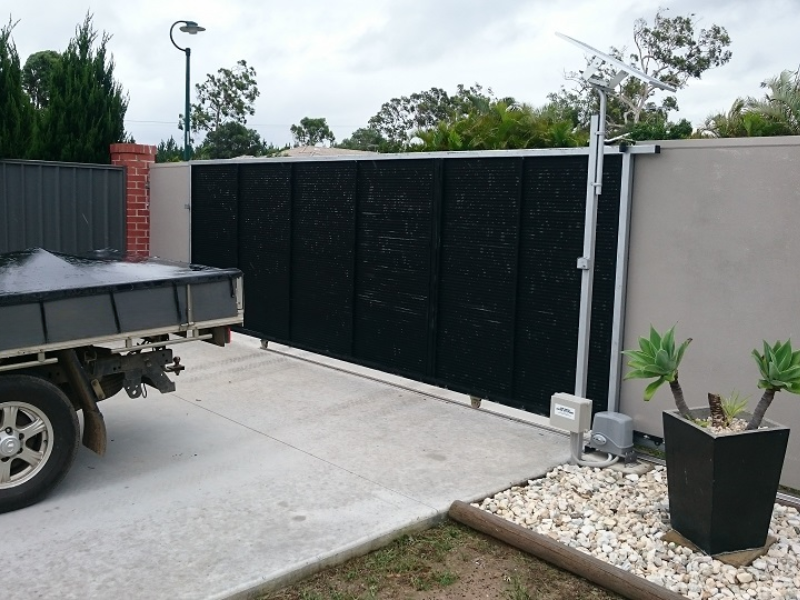
Sizing Your System
Sizing your solar sliding gate motor correctly ensures reliability and longevity. Small domestic gates, typically under 250 kilograms, can operate efficiently with 50–100-watt solar panels and 20–50 Ah batteries. Medium-sized gates, up to about 600 kilograms, often need 100–250-watt panels and 50–120 Ah batteries. Heavy-duty gates over 600 kilograms require larger panels, higher-capacity motors, and possibly hybrid backup connections to the main grid.
When in doubt, oversize slightly — this provides extra energy storage for cloudy days and reduces battery wear. Always check the manufacturer’s guidelines for your specific gate dimensions and environmental conditions.
Installation Process
Installing a solar sliding gate is straightforward but requires precision. It begins with a site assessment to determine the best solar exposure and gate alignment. The motor is then mounted securely on a concrete base, and the gear rack is aligned with the gate. Next, the solar panel is installed in a location with maximum sun exposure — ideally facing south in the Northern Hemisphere or north in the Southern Hemisphere.
The battery and controller are typically housed in a weatherproof enclosure near the gate or inside a nearby shed or garage. Safety devices such as photocells, edge sensors, and warning lights are connected and tested. Once everything is wired, the system is programmed for remote control, auto-close timing, and obstacle detection. Although DIY installation is possible for smaller systems, professional installation ensures compliance with safety standards and long-term reliability.
Cost Expectations
The cost of a solar sliding gate motor depends on gate size, material quality, and included features. Entry-level kits for lightweight residential gates typically range from $400 to $1,000 and include basic components like a small motor, solar panel, and battery. Mid-range systems with more durable motors, larger panels, and AGM batteries can cost between $1,000 and $3,000.
High-end, heavy-duty systems designed for larger gates or commercial use may cost anywhere from $3,000 to $8,000 or more. These often include lithium batteries, MPPT controllers, advanced safety systems, and Wi-Fi or GSM connectivity. Professional installation, concrete work, and permitting fees can add to the total cost but ensure a safe and compliant setup.
Environmental Impact and Energy Savings
The environmental benefits of solar sliding gate automation extend far beyond convenience. Every kilowatt-hour generated by your solar panels reduces dependence on fossil fuels and lowers greenhouse gas emissions. While an automated gate consumes relatively small amounts of power, over years of use, the cumulative energy savings and emission reductions are substantial.
Additionally, many modern solar gate components are recyclable, and high-quality systems can last up to 20 years or more with proper care. For eco-conscious homeowners, solar gate motors are a natural complement to other sustainable technologies like rooftop solar panels, electric vehicle chargers, and smart home energy systems.
Safety and Regulatory Considerations
Safety should always be a top priority with solar sliding gate automation. Choose models that include auto-stop and auto-reverse functions, ensuring the gate halts or reverses if it detects an obstacle. Install warning signs or lights if the gate operates near pedestrian areas. Some regions have specific electrical or building codes governing automatic gates, so it’s important to verify compliance and obtain any necessary permits.
Professional installation helps guarantee adherence to these standards and can prevent voiding manufacturer warranties. Proper safety integration protects not only your property but also visitors, pets, and vehicles.
Maintenance Tips for Longevity
One of the greatest advantages of solar sliding gate automation is its low maintenance requirements. Still, a few routine checks can greatly extend the system’s lifespan. Clean the solar panels at least once a year, or more frequently in dusty or pollen-heavy areas, to maintain optimal efficiency. Inspect the battery terminals for corrosion and ensure they remain tightly connected.
If you use lead-acid batteries, check electrolyte levels periodically. For lithium batteries, monitor voltage readings to confirm healthy performance. Lubricate the gate’s moving parts, rollers, and track according to the manufacturer’s schedule. Test all safety sensors and auto-reverse features every few months to ensure they’re functioning correctly. Keeping a simple maintenance log helps you spot potential issues before they become costly repairs.
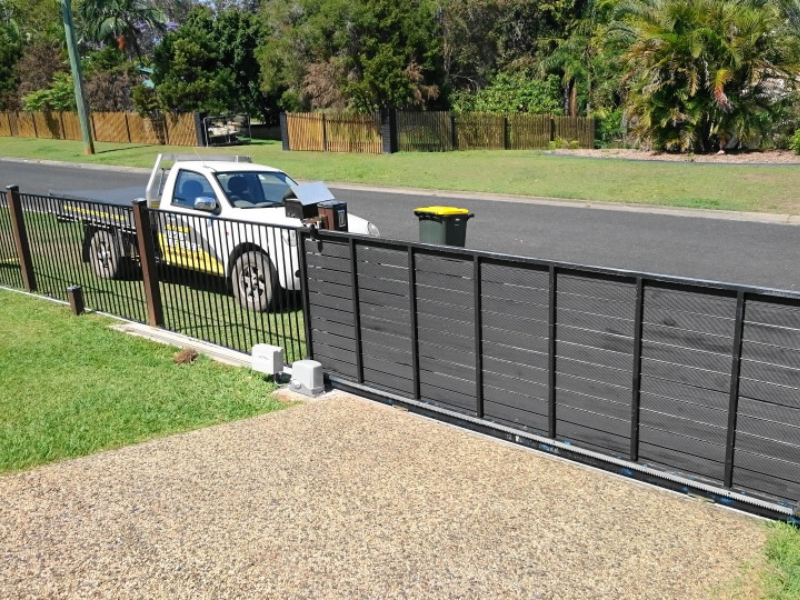
Conclusion: A Smart Investment for a Sustainable Future
Investing in solar sliding gate automation is more than just an upgrade — it’s a long-term commitment to sustainability, independence, and security. By harnessing renewable energy, homeowners enjoy uninterrupted access control while reducing electricity costs and environmental impact. The technology is now more efficient, affordable, and customizable than ever before, making it an excellent choice for new homes, renovations, or eco-conscious upgrades.
Before purchasing, evaluate your gate size, daily usage, and solar potential to choose the right system. Prioritize safety, quality components, and professional installation to ensure years of smooth operation. With proper planning, your solar-powered sliding gate motor will deliver unmatched convenience, resilience, and peace of mind — all while helping the planet.
Ready to make your home more sustainable and secure?
👉 Contact the experts at DigitalHomeSystems for a free quote or site assessment today.

